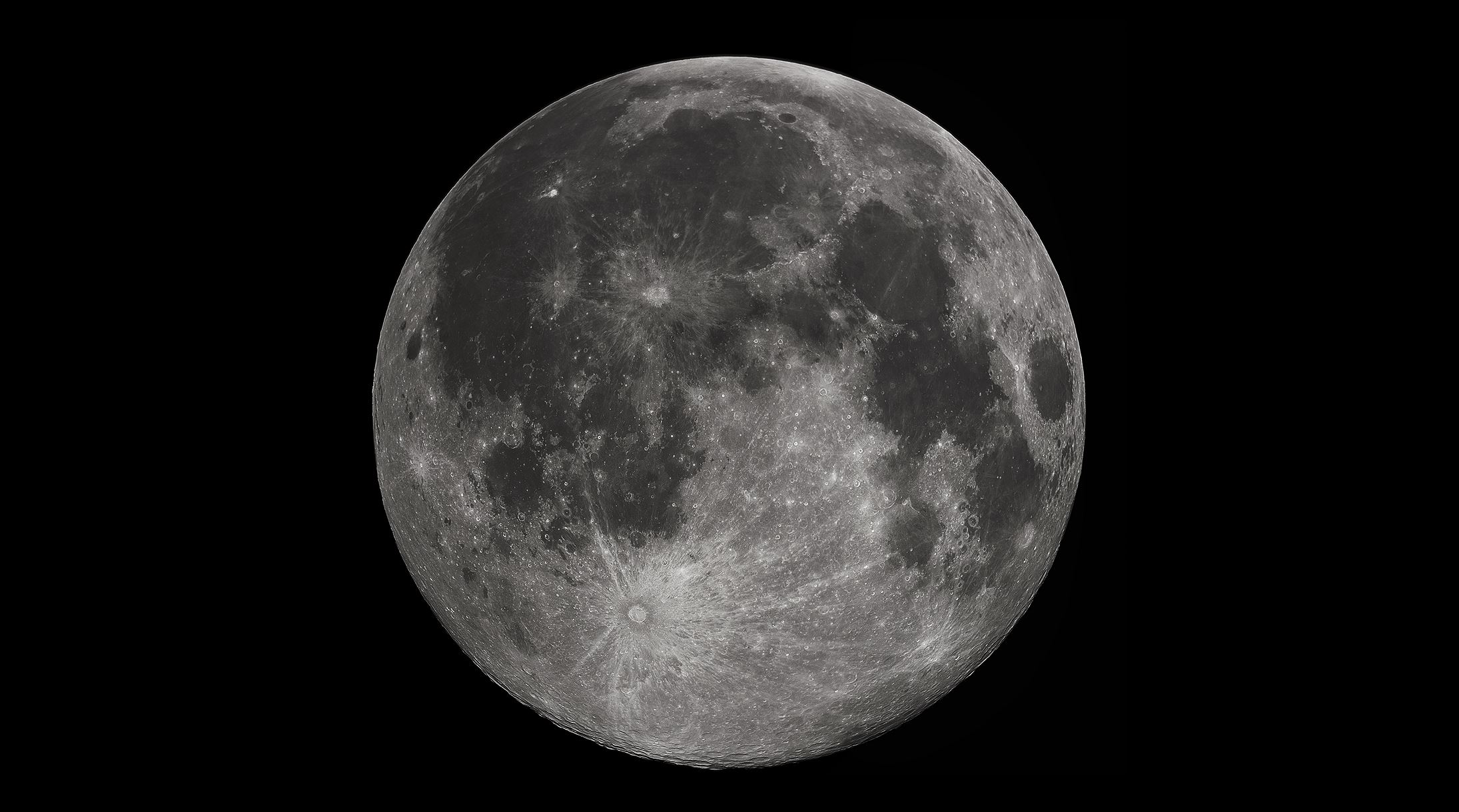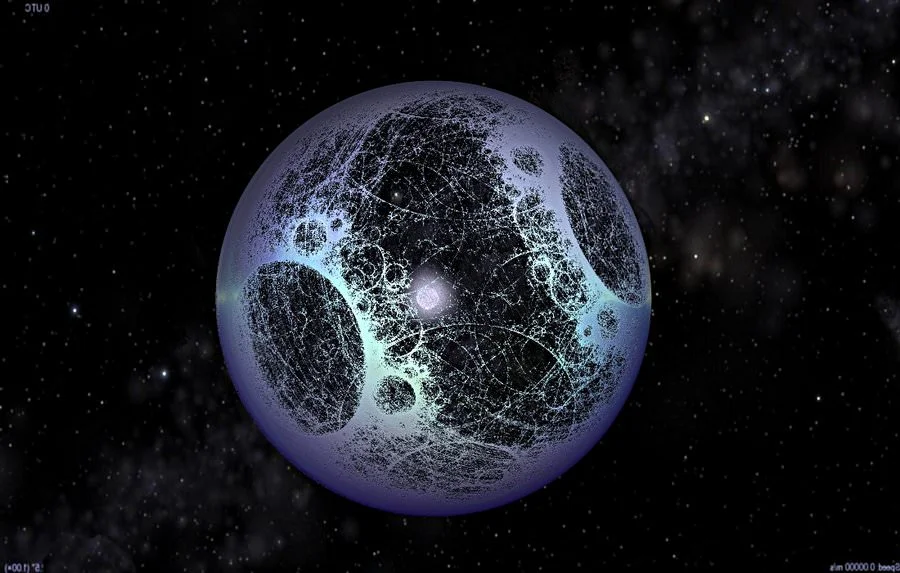According to the Chinese space agency CNSA there are plants growing on the Moon for the first time ever. Seedlings of a cotton plant to be precise, the seeds where taking to the moon by the Chang’e-4 probe.
Hubble sees the brightest quasar in the early Universe
The NASA/ESA Hubble Space Telescope has discovered the brightest quasar ever seen in the early Universe. After 20 years of searching, astronomers have identified the ancient quasar with the help of strong gravitational lensing. This unique object provides an insight into the birth of galaxies when the Universe was less than a billion years old.
Giant Streak Structure Found in Venus’ Cloudtops
In the far Future our Sun will Turn Into a Solid Crystalline White Dwarf. Here’s How it’ll Happen
About fifty years ago, astronomers predicted what the ultimate fate of our Sun will be. According to the theory, the Sun will exhaust its hydrogen fuel billions of years from now and expand to become a Red Giant, followed by it shedding it’s outer layers and becoming a white dwarf. After a few more billion years of cooling, the interior will crystallize and become solid.
Nobody predicted this galaxy would be so lonely
Rotating black holes may serve as gentle portals for hyperspace travel
It Looks Like Dark Matter Can be Heated Up and Moved Around
Look at a galaxy, what do you see? Probably lots of stars. Nebulae too. And that’s probably it. A whole bunch of stars and gas in a variety of colorful assortments; a delight to the eye. And buried among those stars, if you looked carefully enough, you might find planets, black holes, white dwarves, asteroids, and all sorts of assorted chunky odds and ends. The usual galactic milieu.
‘The Cow’ explosion: how astronomers are cracking one of the greatest new mysteries of the sky
Something highly unusual was picked up by the Asteroid Terrestrial Impact Last Alert System (ATLAS) on June 16, 2018. The discovery of a strange flare in the sky – brightening and fading – was reported in an astronomical telegram, which then alerted scientists. The source was named AT2018cow – based on a naming convention for transient sources where the last three letters are randomly assigned. Understandably, though, scientists quickly nicknamed it “the Cow”.
Holy Cow! Mysterious Blast Studied with NASA Telescopes
A brief and unusual flash spotted in the night sky on June 16, 2018, puzzled astronomers and astrophysicists across the globe. The event — called AT2018cow and nicknamed "the Cow" after the coincidental final letters in its official name — is unlike any celestial outburst ever seen before, prompting multiple theories about its source.
Hubble takes gigantic image of the Triangulum Galaxy
The NASA/ESA Hubble Space Telescope has captured the most detailed image yet of a close neighbour of the Milky Way — the Triangulum Galaxy, a spiral galaxy located at a distance of only three million light-years. This panoramic survey of the third-largest galaxy in our Local Group of galaxies provides a mesmerising view of the 40 billion stars that make up one of the most distant objects visible to the naked eye.
Still no Word from Opportunity
Tiny satellites could be “guide stars” for huge next-generation telescopes
Juno Saw One of Io’s Volcanoes Erupting During its Recent Flyby
Thanks to a mission extension, NASA’s Juno probe continues to orbit Jupiter, being only the second spacecraft in history to do so. Since it arrived around the gas giant on July 5th, 2016, Juno has managed to gather a great deal of information on Jupiter’s atmosphere, magnetic and gravity environment, and its interior structure.
Will China’s moon landing launch a new space race?
China became the third country to land a probe on the Moon on Jan. 2. But, more importantly, it became the first to do so on the far side of the moon, often called the dark side. The ability to land on the far side of the moon is a technical achievement in its own right, one that neither Russia nor the United States has pursued.
From volcanoes on Mars to scarps on Mercury – how places on other worlds get their names
The New Horizons spacecraft, which flew past Pluto in 2015, successfully completed a flyby of “Ultima Thule”, an object in the Kuiper belt of bodies beyond Neptune on January 1, 2019. The name Ultima Thule, signifying a distant unknown place, is fitting but it is currently just a nickname pending formal naming. The official names of the body and of the features on its surface will eventually be allocated (this could take years) by the International Astronomical Union (IAU), which celebrates its centenary in 2019.
India is Going to be Sending Three People to Space in Three Years
One of the most notable features of the modern space age is the way that new participants are entering the fray. In addition to the traditional contenders – NASA and Roscosmos – China has become a major player in space in recent decades. And in 2022, according tor recent statements, India will join the club too when it becomes the fourth nation to send a crewed mission to space.
NASA’s Technosignatures Report is Out. Every Way to Find Evidence of an Intelligent Civilization
In 1961, famed astronomer Frank Drake created a formula for estimating the number of extra-terrestrial intelligences (ETIs) that could exist within our galaxy. Known as the “Drake Equation“, this formula demonstrated that even by the most conservative estimates, our galaxy was likely to host at least a few advanced civilizations at any given time. About a decade later, NASA officially kicked of its search for extra-terrestrial intelligence (SETI) program.
Russian Cosmonaut says that the Hole in the ISS was Drilled From the Inside
Back in August, the crew of the International Space Station (ISS) was surprised to learn that a leak was responsible for a slight loss in air pressure aboard the station. After investigating, they learned that the cause was a small hole in the Russian Soyuz spacecraft that had docked with the ISS. While the hole was promptly sealed, the cause of it has remained a mystery ever since.

















